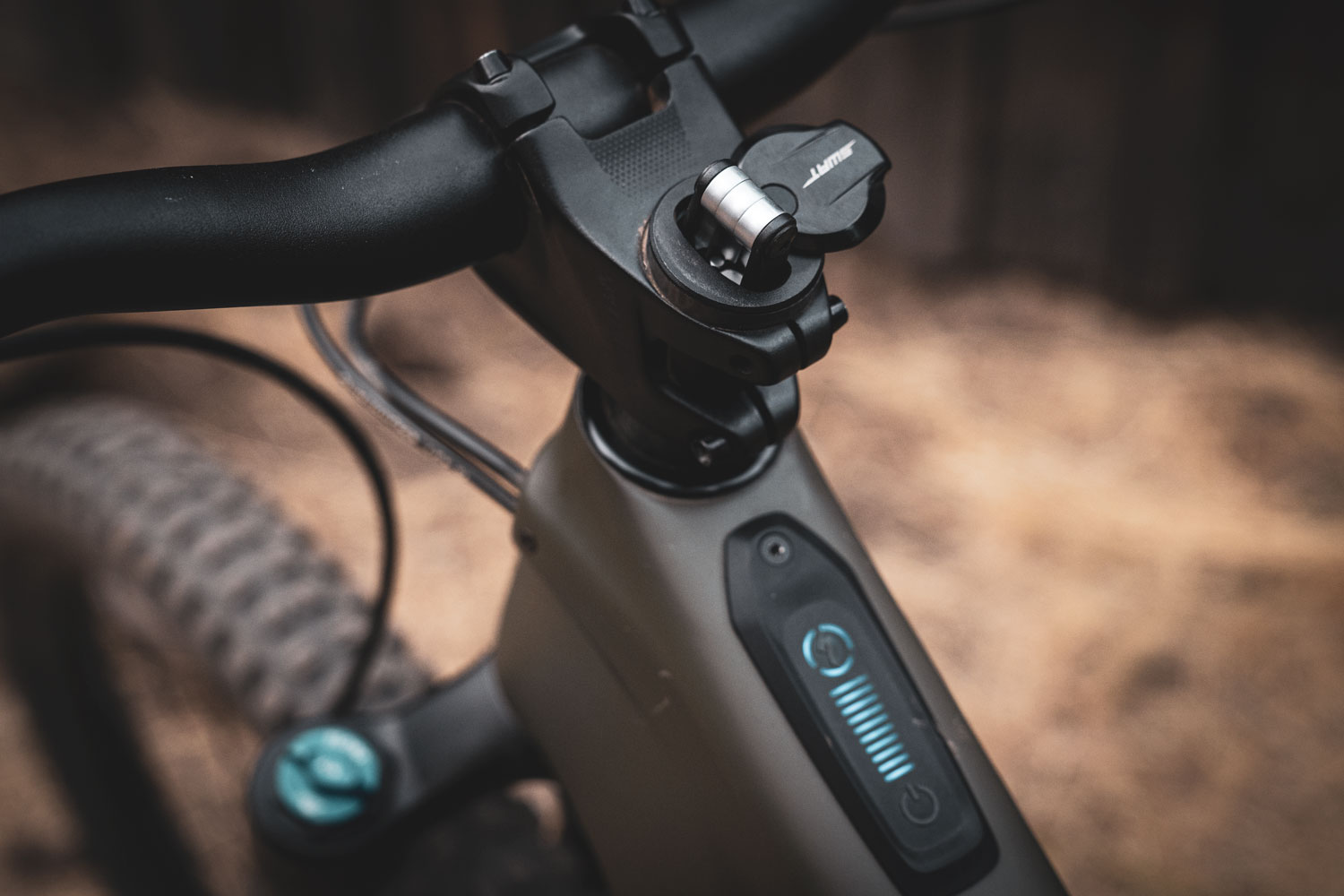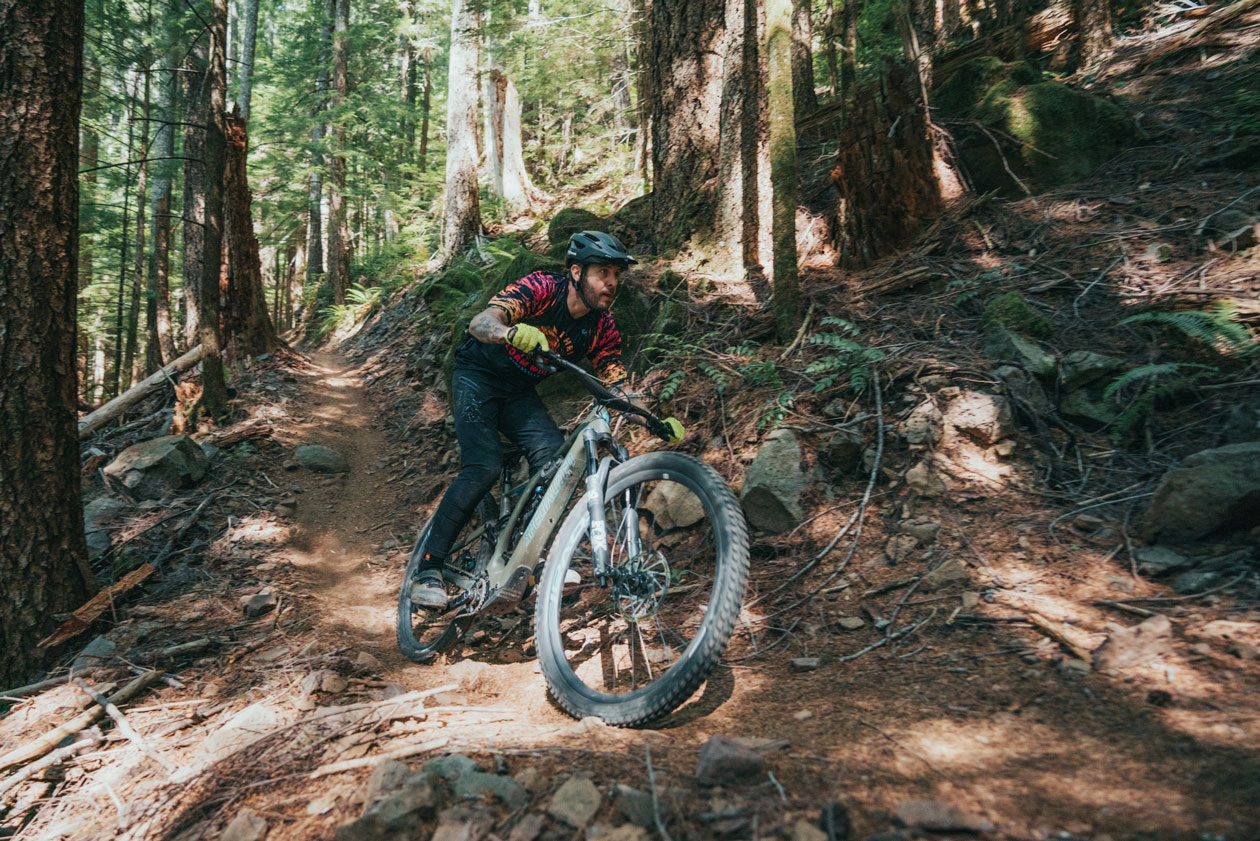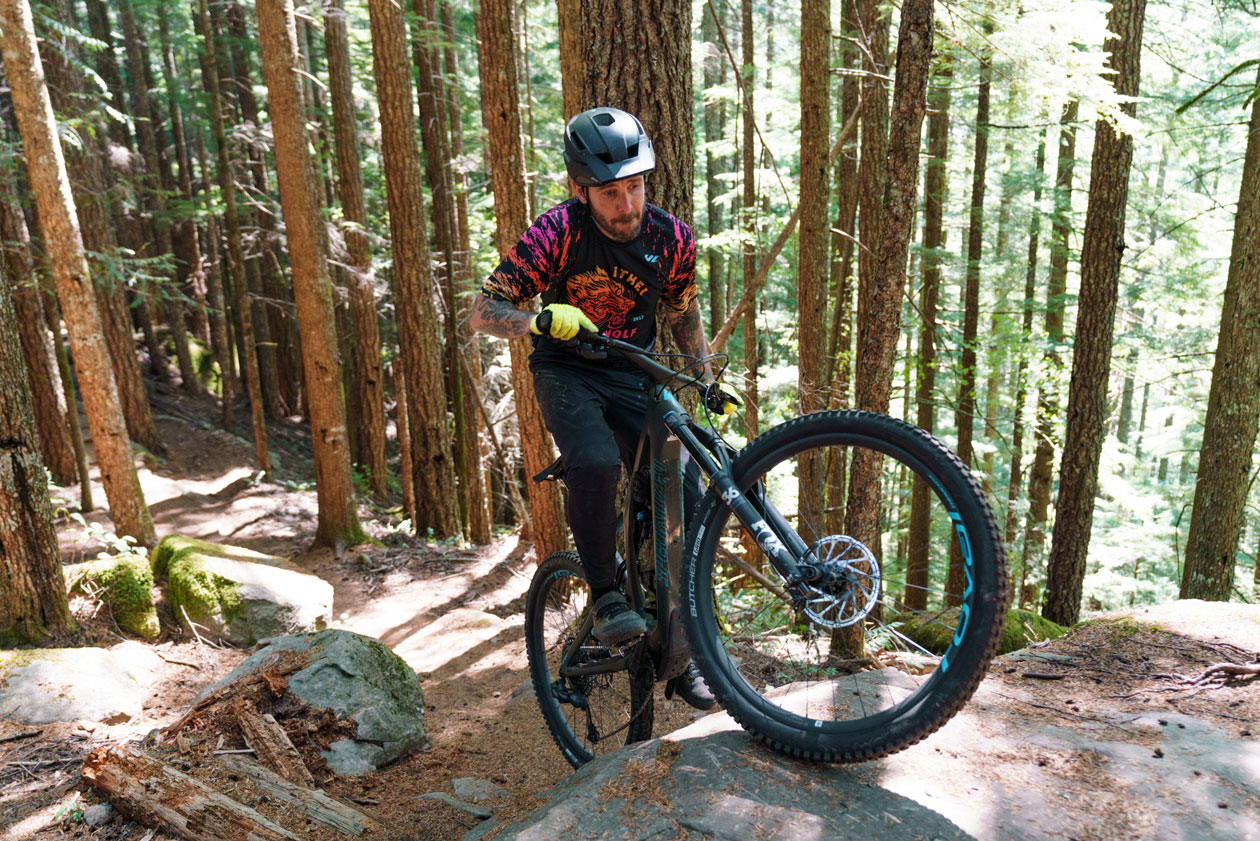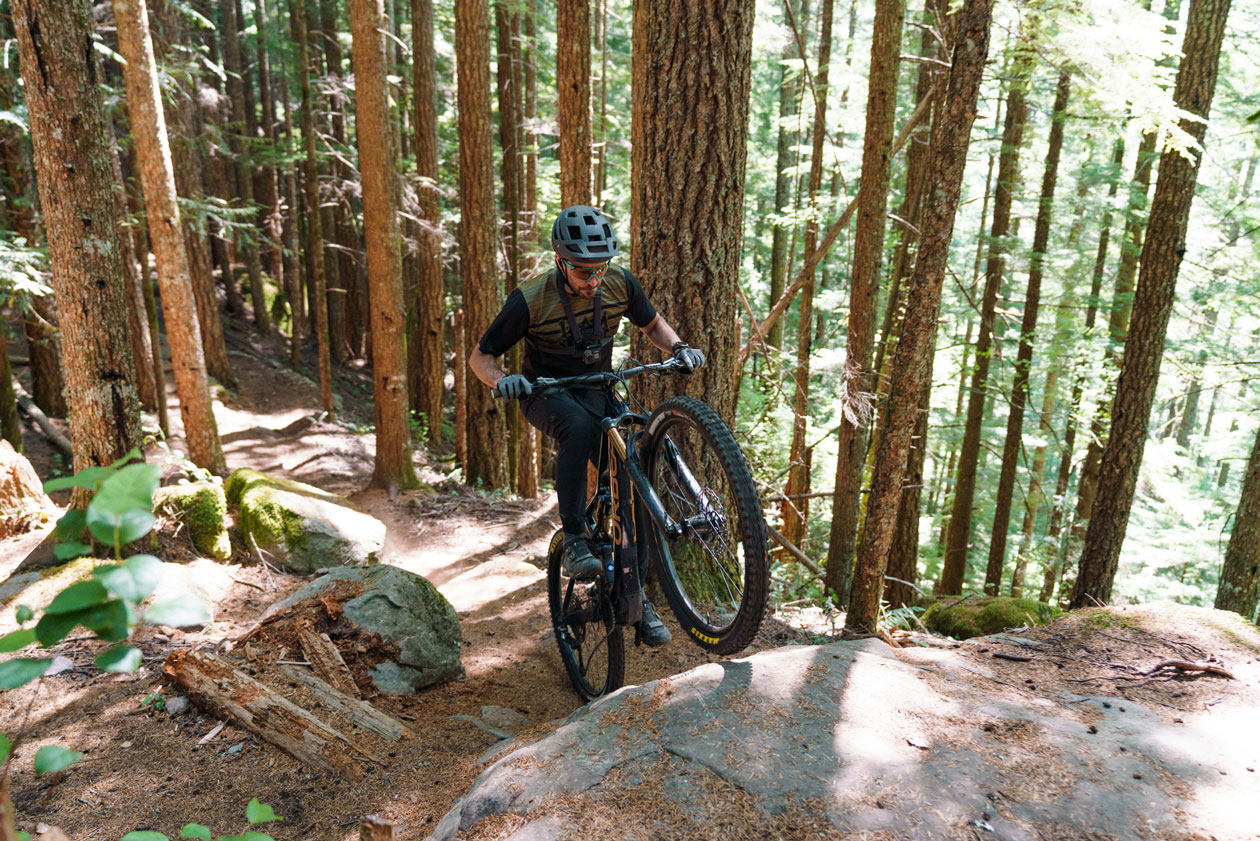Specialized Turbo Levo SL vs Orbea Rise eBike
BATTLE OF THE EBIKE LIGHTS
Photos by Dusten Ryen | Video by Brian Niles
The lightweight eMTB category, or eBike Light as we like to call it, is an interesting one. Relatively few brands are focusing energy on these lighter, reduced power eBikes, but Orbea’s Rise eBike and the Specialized Turbo Levo SL are certainly two of the category’s most sought after options, and for that reason we put them head-to-head. After a year of riding both bikes on their own, we spent the last couple of months riding them together, swapping back and forth and repeating trails all over Oregon’s e-friendly mountain bike trails. We must admit, we went into this shootout thinking we knew who the clear winner would be, but as we started passing the bikes back and forth on more trails, the gap closed, and we walked away with some interesting talking points. Let’s see how the Orbea Rise eBike and Specialized Turbo Levo SL performed and where we think each bike excels. For a more in-depth conversation and points, be sure to watch our video here.
THE CONTENDERS
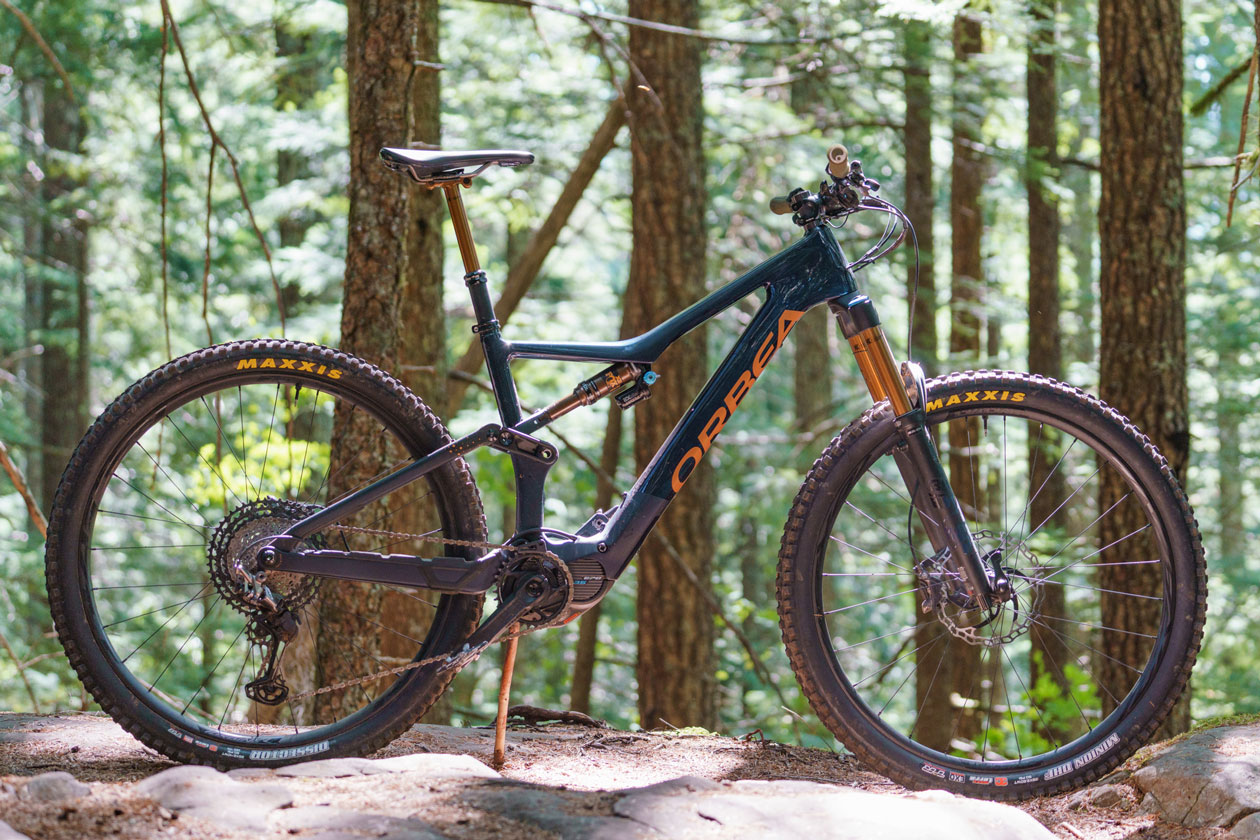
ORBEA RISE
Travel: 150/140mm
4 Models Available
Price Range: $6,999 (M20) – $10,999 (M-LTD)
Model Tested: M-Team
MSRP: $9,999
Weight: 38.8 lbs
GEO (Large)
Reach: 474mm
Chainstay: 445mm
HTA: 65.5-degrees
STA: 76.5-degrees
Bottom Bracket Height: 336mm
Wheelbase: 1,238mm
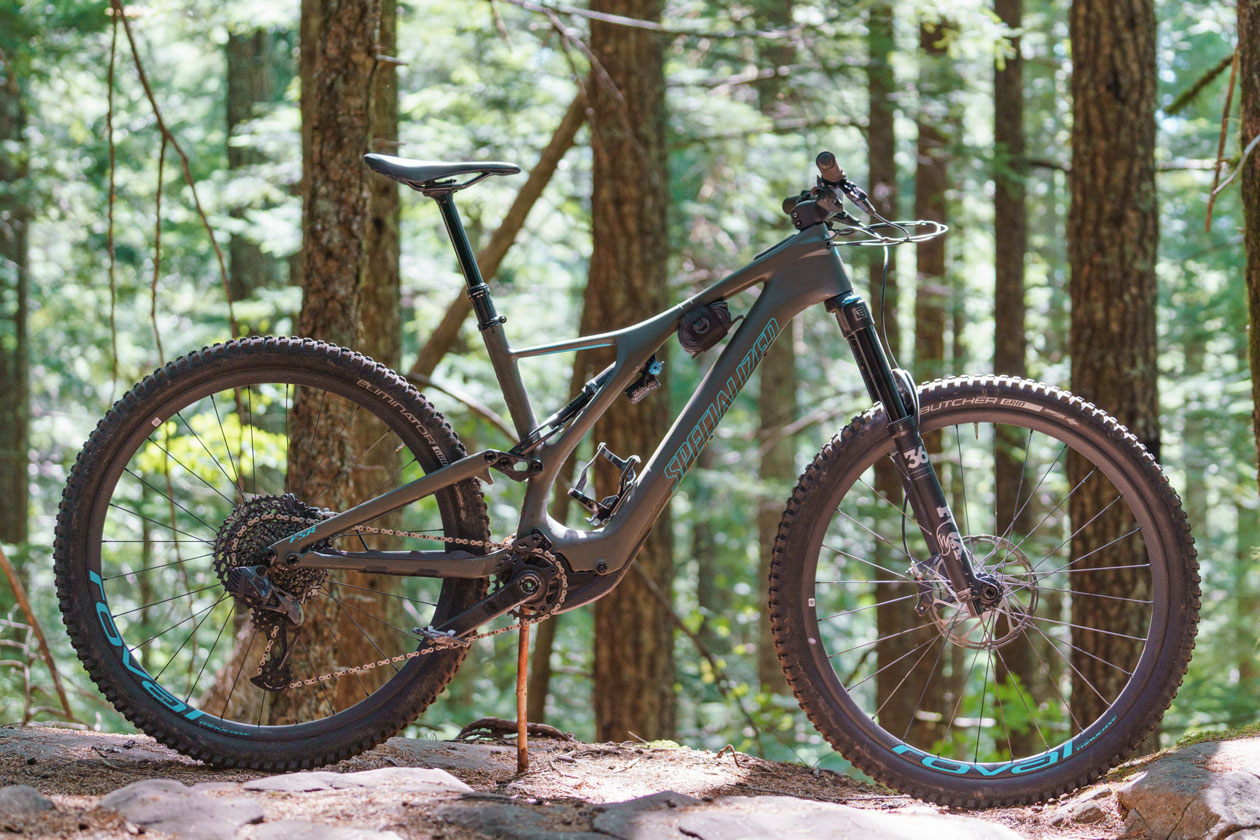
SPECIALIZED TURBO LEVO SL
Travel: 150/150mm
6 Models Available + S-Works Frame Only
Price Range: $7,000 (Comp) – $14,000 (S-Works)
Model Tested: Expert Carbon
MSRP: $9,025
Weight: 39.3 lbs
GEO (Large)
Reach: 455mm
Chainstay: 437mm
HTA: 66-degrees
STA: 74.6-degrees
Bottom Bracket Height: 348mm
Wheelbase: 1,217mm
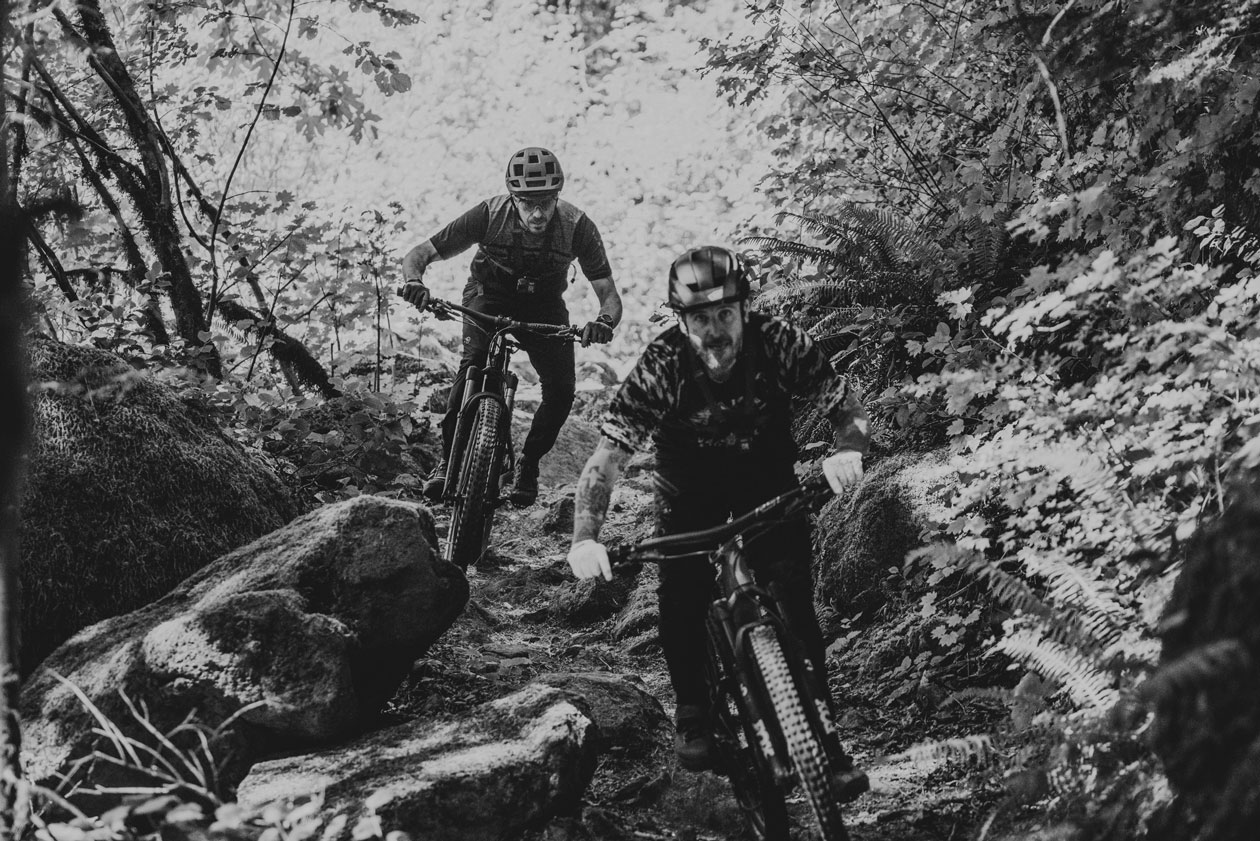
Back in 2020 and early 2021 we created Dissected Features on both of these bikes, which gave us a great opportunity to get intimately familiar with them and learn all the tech we could directly from the brands. Since then, the bikes have been passed around with, for the most part, great reports.
Drive Unit and Battery
The Orbea Rise eBike M-Team utilizes a custom-tuned Shimano EP8 (RS) drive unit that cranks out a maximum 60Nm of torque. Powering the EP8 unit is an internal 360wh battery developed with Panasonic that is claimed to deliver 3,900’ or 1,200 meters of climbing. Also available is a 252wh range extender that fits on the bottle cage of the bike and provides enough juice for an additional 2,600-feet, or 800 meters of climbing. For power and battery range, we give this Orbea eBike the vote.
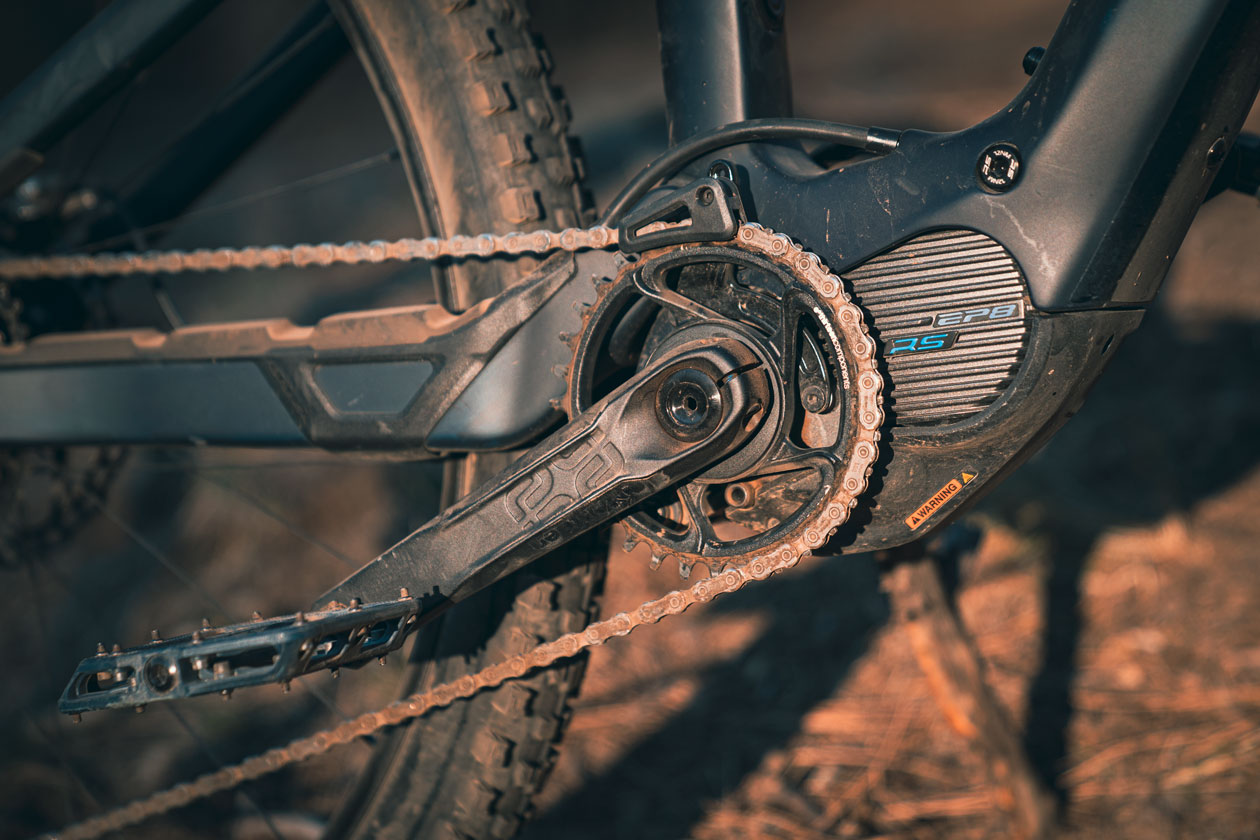
The Specialized Turbo Levo SL employs their own drive unit, one also used in their eRoad bikes. The compact SL 1.1 drive unit is a 240-watt motor capable of delivering 35Nm of torque, just more than half of the Orbea Rise. The 320Wh battery is integrated into the frame and Specialized has an additional 160Wh range extender for a max of 480Wh.
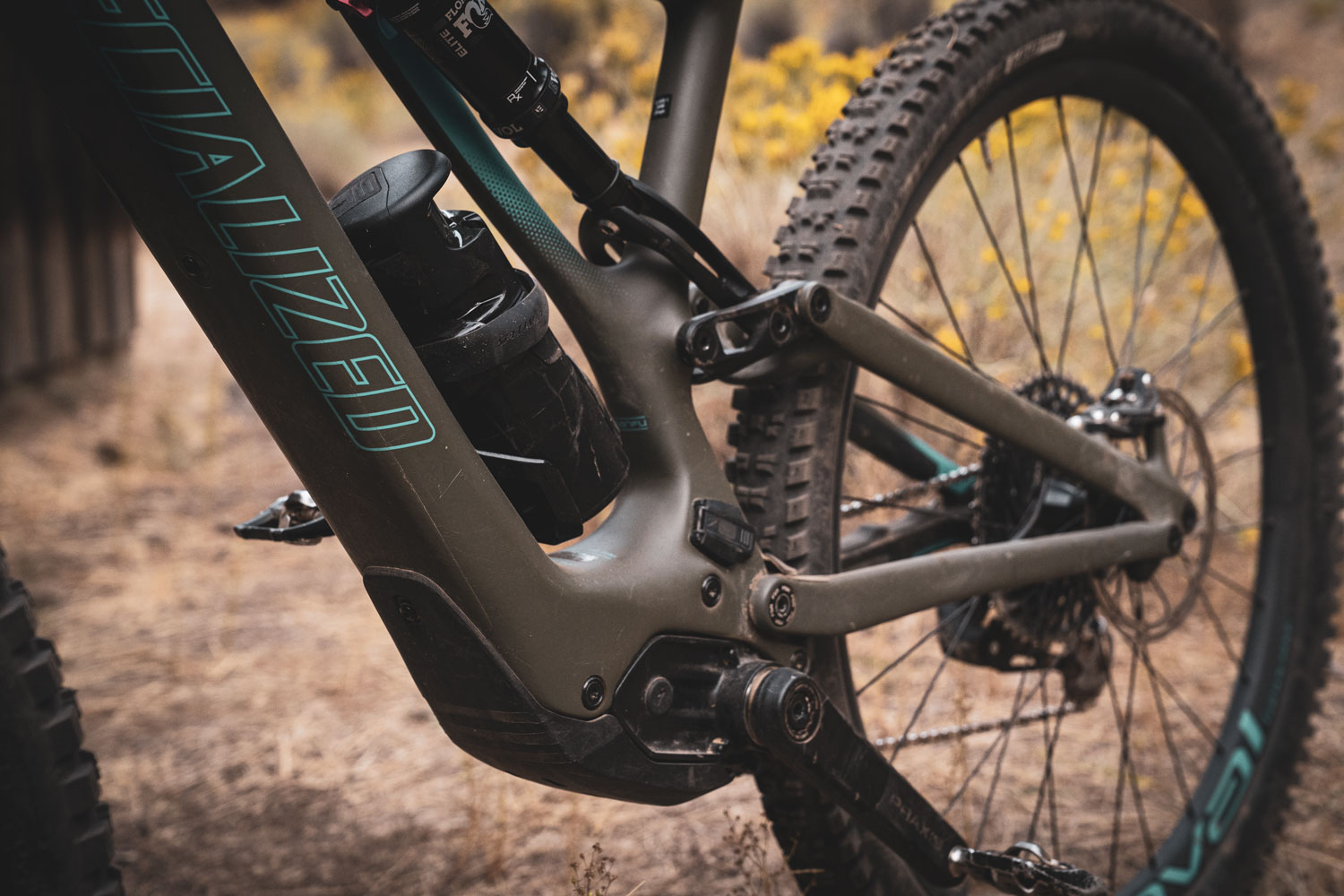
Apps, Electronics, Integration
Orbea’s use of the Shimano EP8 system means that riders can use the Shimano E-Tube app to modify modes, power delivery, support and more quite easily. Similarly, Specialized has their Mission Control app, which also allows for some modifications and adjustability as well as more detailed information on battery life. Speaking of battery life, neither bikes have amazing displays, at least not when compared to their full-powered eMTB brothers. The Orbea Rise and its Rider Synergy philosophy prioritize minimalism, making the Rise more mountain bike and less E. The downside to that is a little junction box display with small, dimly lit LEDs that indicate power mode by color and battery range. The range indicator stays green until 20%, at which time it’s (A) too late and (B) turns red. Of course, for an upcharge in the MyO program, you can opt to purchase the standard Shimano STEPS display unit, which we 100% recommend.
The Specialized Turbo Levo SL uses 10 little backlit lines to represent 10% battery chunks. While it’s tough to tell how many are lit or out while moving down the trail, you can at least get a better representation when four or five bars are out and actually count them next time you stop for some water. We give the point to the Specialized Turbo Levo SL in this configuration but would likely go Orbea if equipped with the Shimano display.
Builds and Pricing
Both brands offer a variety of builds and price levels however in our opinion, Orbea takes our vote for offering more value to customers as their parts spec to price tag is better across the board. Plus, Orbea has a really cool MyO program where riders can customize things from paint to components to suit their style or terrain.
Both of the bikes we tested were fairly similar in price, however we upgraded the fork on our Levo SL from a Fox 34 to a Fox 36, and since that is an option that Specialized offers, we kept it on from the original test and feel it would have brought the prices even closer. Even still, for less than a thousand dollars more, the Orbea eBike comes with Factory Fox suspension, Shimano XTR brakes and drivetrain and nice Race Face carbon fiber wheels. Comparatively, the Levo SL comes with Performance level Fox suspension, carbon Roval Traverse wheels, SRAM GX Eagle and less than desirable SRAM G2 RSC brakes. Certainly not a terrible build overall, but for the price tag, there are some competitive offerings out there.
Geometry
With both bikes having similar applications in the all-around Trail category, geometry is pretty comparable on both the Specialized Turbo Levo SL and Orbea Rise eBike. The Orbea Rise has 140mm of rear wheel travel and we opted for the 150mm fork up front, while the Levo SL comes with 150mm front and rear, but we spent most of our time with a 160mm Fox 36 up front. In the factory configurations the Rise has a 65.5-degree head tub angle compared to the Levo SL’s 66 degrees. The seat tube angle on the Rise sits at 76.5 while the Levo SL is 74.6 degrees. Both of our test bikes are size large but sported very different reach numbers with the Rise being 474mm and the SL at 455mm. These numbers combined with the 445mm chainstays and 437mm (SL) chainstays contribute to the difference in overall wheelbase. The Orbea Rise is a bit longer than the Specialized Levo SL, with measurements of 1,238mm and 1,217mm respectively.
We think both bikes have relevant geometry for most riders however, we would suggest some minor adjustments if we were at the drawing board. We’d like to see the Levo SL have a reach around the 475mm range, and we’d like both bikes to get a ½-degree to full degree slacker head tube angle. We think the Levo SL would also benefit from a slightly steeper seat tube angle. With both bikes being so close aside from reach and seat tube, we’d give the slight nod to the Orbea Rise for more aggressive riders and think that the Levo SL would be a great option for those looking for a more relaxed ride position.
Suspension Feel
This is an area where the bikes are quite different in feel, and the voting is even more subjective than other categories. Different takes on familiar platforms yield very contrasting rider experiences aboard the Levo SL and the Rise. The Orbea Rise uses a four-bar suspension system that our riders all felt was “Stiffer and racier.” What we mean is, the Rise will give more feedback to the butt of the rider while seated and pedaling, it will give slightly more feedback through the pedals and handlebars, and for some it will feel like you’ve got a few too many PSI in the shock if you’re not hard on the gas. The upside to this feel is that the bike rides high in the travel, is lively as hell and makes the Rise ride even lighter than it is. It’s worth noting, we did increase the volume reducer size in the Rise as we were blowing through travel and bottoming out harshly, so aggressive and/or heavier riders will likely do the same.
On the opposite end of the spectrum is the Specialized Levo SL and it’s plush, supple suspension feel. Our riders noted that the Levo SL felt like it rode a bit deeper in the travel, was more comfortable on longer days in the saddle and generally rode a bit softer. While it had upsides, it also made the bike feel heavier than the Orbea Rise and didn’t get airborne or pre-hop features on the trail as effortlessly.
We felt that depending on trail conditions, where and how we were riding that day either bike would take the points for this category and believe that riders could love one, or both for their personal applications. For those reasons this category was a draw.
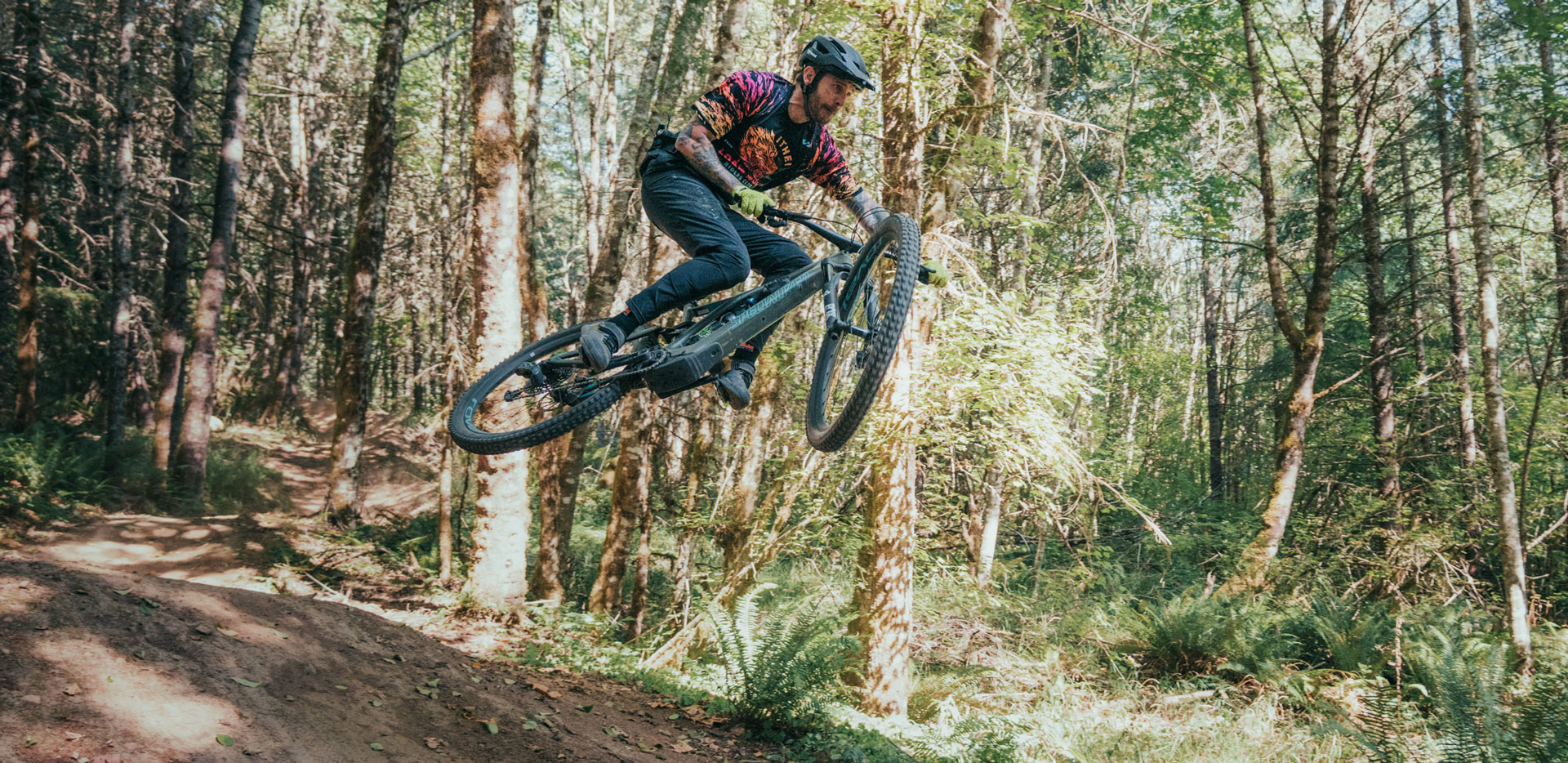
The Wolf’s Last Word
Last year we were really stoked on the Specialized Levo SL, it was the first eBike Light we’d ridden, and it had us excited to see where the category would go. Months later we hopped aboard the Orbea Rise for the first time and the monstrous increase in power had us putting nails in the Levo SL’s coffin. In fact we spent most of the year thinking about our end of year shootout between these two and were quite confident that the Rise’s power, range and lighter feel would easily knock the long-time category leader off the throne.
In many ways, the Orbea Rise has dethroned the Levo SL, however as we spent more time riding both bikes back-to-back and handing them off to repeat sections of trail, the old faithful Levo SL crawled, scratched and fought its way back into contention. Where the Rise was light, poppy, snappy and powerful, the Levo SL was stable, predictable, composed and confident.
Despite the points won in categories above, we are firm believers that a bike is much more than geometry numbers on a chart and the level of components bolted to the frame. We’d much rather have an aluminum bike with SLX components that absolutely shreds than a sexy carbon fiber, Shimano XTR-equipped bike that simply doesn’t ride well. While the points above may indicate a clear winner, there are several weighted points that begin to tip the scale back towards the Levo SL’s side once on the trail.
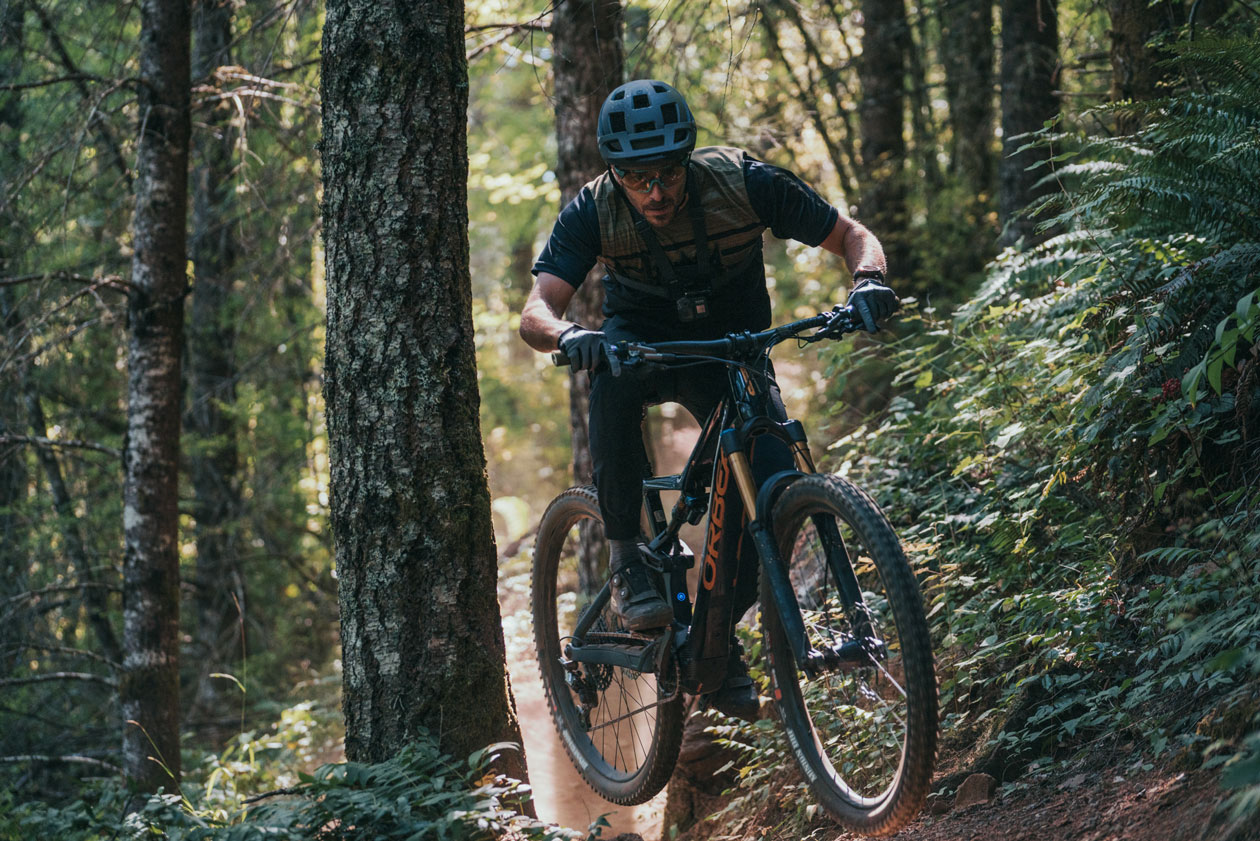
While our testers pick the Orbea Rise as the winner in the climbing, overall power, value and playful trail mannerism categories, the Levo SL takes the double points in the aggressive downhill territory and bigger jump lines. Being that we’re die-hard downhillers, we prioritize a bike’s downhill capabilities and how confidently we can tackle the roughest terrain at full speed. The Levo SL (equipped with a 36 fork) and it’s heavier feel, softer suspension and stiffer wheel spec mean we could relax a bit more and look further down the trail. In reality, we realize that this terrain is likely not going to be ridden regularly by a majority of riders looking at a Trail category lightweight eMTB, but it’s worth noting for those who venture into double-black diamond terrain. We also agreed that a stiffer wheel spec on the Orbea Rise would likely resolve a huge portion of the issue we had in those extreme scenarios.
Despite the Levo SL fighting hard and earning some major double-points in the gnarly downhill category, it’s just not enough to have us wanting to pick it over the light and lively Orbea Rise. If you’re in the market for an eBike Light, want the benefits of some added boost on the climbs without the weight penalty and different ride feel that a full-powered eMTB offers, the Orbea Rise gets our vote. There are a growing number of options available, but these two are the best we’ve ridden, and the Orbea Rise (with some customized build parts) would be our go to ride of choice.
To see all the models and learn more about these bikes, check the websites below.
LEAVE A COMMENT | WIN FREE STUFF
Want to win some free schwag? Leave a comment and vote up the most thoughtful comments and each month we’ll pick a winner. The person with the smartest and most helpful replies will earn some sweet new gear. Join the Pack and get the latest news and read the latest reviews on the top mountain and electric mountain bikes.


